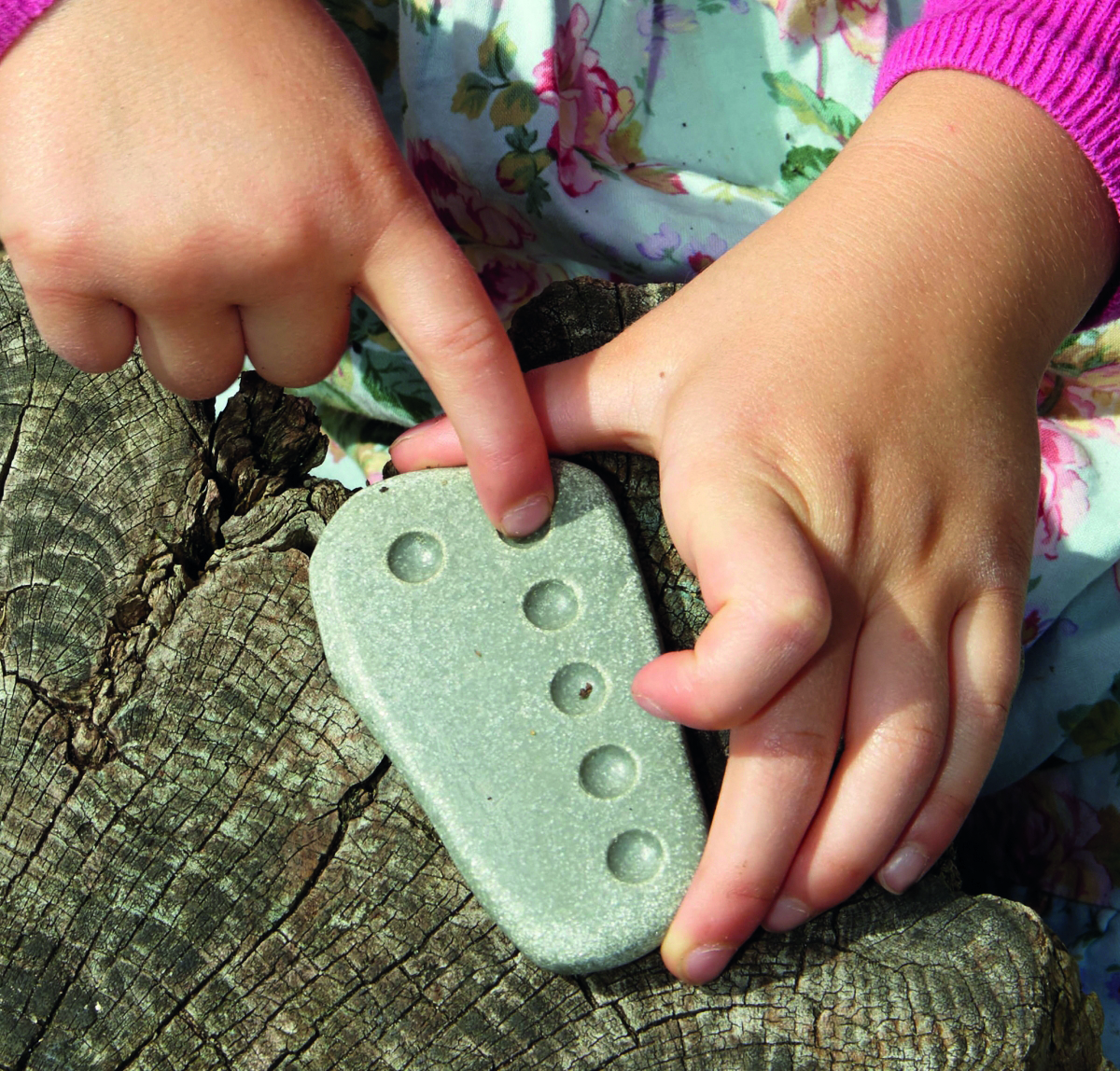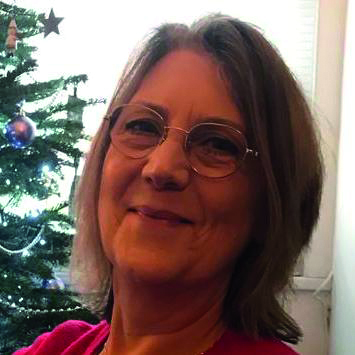
Children are born with an innate interest in mathematics. Through their schematic thinking, they have a natural ability to sort objects and discriminate between groups of one, two and three objects.
They tune into shape, space and measure through sensory play with water and malleable materials.
By introducing rhymes and songs around counting, providing treasure basket and heuristic play collections and creating a number-rich environment, practitioners can support children’s ability to count reliably from one to ten.
Di Chilvers, advisory consultant in early education at WatchMeGrow and an Early Education associate, says, ‘Practitioners can support children’s developing understanding of number by modelling the use of number language in meaningful, relevant situations. Number isn’t just about counting; it’s about having that deep conceptual understanding of what “two”, for example, is.
‘For younger children, the embodiment of number is very important. Two is like two big claps or two big steps. This helps young children to internalise their understanding in meaningful ways.’
MATHS IN ACTION
 In its draft document setting out proposed changes to the EYFS framework, the Department for Education (DfE) says children should develop ‘a secure base of knowledge from which mathematical mastery is built’.
In its draft document setting out proposed changes to the EYFS framework, the Department for Education (DfE) says children should develop ‘a secure base of knowledge from which mathematical mastery is built’.
In early years maths, the adult’s role involves observing, listening and participating in children’s play; when appropriate, introducing new language and concepts which are set in context and encouraging ‘serve and return talking’ and sustained shared thinking, Ms Chilvers explains.
‘It also involves using open-ended, possibility questions to stretch a child’s thinking and give clues to solve problems,’ she adds.
An interesting example of non-verbal communication took place with ten-month-old Jacob, who was playing with a basket of objects, Ms Chilvers recalls. ‘He wasn’t interested in what was in the basket, but he found the lid. His key person, Emily, started tapping the lid and beating a rhythm – tap tap tap. He stopped and looked at her and then followed, tap tap tap. Backwards and forwards went this rhythmic dance between the two of them. It could have been schematic… he was certainly interested in the up and down trajectory; making the sound and the beat and following the pattern of the rhythm.’
Practitioners might think that it is hard to do serve and return with a baby because they don’t talk. But they use other ways to communicate – making sound, cooing or just making and playing with sound through actions.
REPEATING THE LANGUAGE OF NUMBER
Babies as young as five months are aware of quantities, and notice changes in amounts of objects, explains Judith Stevens, a retired independent early years consultant specialising in maths and early language.
‘Before the age of one year, children develop an awareness of number names, and with the right support from the adults around them, use these in their speech as soon as they talk,’ she says.
‘It helps if practitioners are aware of the counting principles, so they can observe children’s current development and plan effectively for future learning.’
Practitioners should introduce children to counting songs, rhymes and stories, such as ‘Round and round the garden like a teddy bear’, ‘This little piggy went to market’, ‘One, two, three, four, five, Once I caught a fish alive’, and the Three Bears and Three Little Pigs.
Ms Chilvers says, ‘Anything with toes and fingers is great because you are getting them to use their body parts as their first real counting resource. In these natural interactions – such as counting as you go upstairs together – the language of number and spatial awareness comes up time and time again.’
Once babies can sit up, treasure basket collections containing interesting objects made from natural materials, such as balls, spoons, cotton reels or scarves, will provide opportunities to organise, order, sequence and classify objects and quantities.
A range of heuristic play resources such as bottles, boxes, tins, pegs, shells, stones, wooden balls, shapes and rings will enable mobile children to practise building, sorting, ordering, filling, emptying, posting and transporting.
MATHS IN CONTEXT
Children learn through sensory processes, so from the age of 12 months practitioners can talk about size and shape when playing with water and malleable materials.
This can also involve rolling out long stretches of playdough or manipulating dough into massive or tiny balls; counting how many scoops or bottles of water it takes to fill different containers or counting animals in and out of Noah’s Ark in the water tray.
Themed role play such as setting up a shop encourages children to count, explore counting in relation to money and link counting to quantity and numeral recognition.
Ms Chilvers says, ‘Older children love to talk about numbers – some children like to talk about massive big numbers; how old they are and how many brothers or sisters they have or what house number they live at. Whatever it is, it’s important to follow their interests.
‘Look at maths in the environment – cars and signs and signals and number plates, bus numbers and house numbers. This sets it in a context that is meaningful for the child, which is important before introducing more abstract numbers. They have to understand what it looks like and feels like; how they can create it – for example, when playing with a dice a four looks different from the four ducks you can see in the pond.’
CASE STUDY: Jo Dabir-Ali, Grove House Nursery School and Children’s Centre
 Jo Dabir-Ali, lead practitioner at Grove House in Southall, London, says block play is just one vehicle, or language, through which her four- to five-year-olds represent their ideas and their experiences of space, shape, form and perspective – their spatial mathematical ideas and spatial reasoning.
Jo Dabir-Ali, lead practitioner at Grove House in Southall, London, says block play is just one vehicle, or language, through which her four- to five-year-olds represent their ideas and their experiences of space, shape, form and perspective – their spatial mathematical ideas and spatial reasoning.
‘Recently a small group of children have been making structures to support their role play. They’ve built individual houses with furniture and beds. The practitioner has taken on the role of Grandma and she has to come and visit them in their homes. The role play has also included making larger houses with spaces for the pets – the children are the pets.
‘Negotiating space has been a big part of this play. “No, no you can’t sit there we need more space for Paige/Reya/Rian.”
‘At one point the house structure kept falling down and Archuthen, aged four, who often made his constructions on his own, contributed to solving the problem by offering to put his shoes by the wall to stop it falling down. Had he learnt that sometimes structures need reinforcing at certain points to give them more stability? Where is that point? At the bottom in the middle of the structure?
‘Transforming those perceptions and understandings into a 3D model takes a lot of skill and a lot of thinking, much of which is explored, developed and mastered through the process of play.’
Books for counting
- 365 Penguins by Jean-Luc Fromental and Joelle Jolivet (Abrams). This book is full of mathematical calculations as the poor family try to solve the problem of storing the penguins in their home.
- Ten in the Bed by Penny Dale (Walker Books).
- One is a Snail, Ten is a Crab by April Pulley Sayre (Walker Books). A ‘counting by feet’ book – with opportunities to look at and talk about people, dogs, spiders and insects and to see what the feet of ten crabs, or 100 snails, look like.
- Handa’s Hen by Eileen Browne (Walker Books). Learn to count with Handa as she searches for Mondi the black hen and meets 2 butterflies, 3 mice, 4 lizards, 5 sunbirds and more along the way.
RESOURCES
- Traditional Treasure Basket for Baby, https://bit.ly/2XxViiu
- Hide and Seek Maths, https:/playtoz.co.uk/hide-seek-maths/
- Rainbow Maths Sticks, https://bit.ly/34AxVq0
- Maths Mastery Collection – Developing Number Sense, https://bit.ly/3eqEaB0
- Mega Maths Corner, https://www.cosydirect.com/mega-maths-corner.html
- Maths Resource Collection, 3-4 years, https://bit.ly/2K3GgsT
- Community Playthings Block play, https://www.community playthings.co.uk/products/block-play
MORE INFORMATION
- Find out more about the Talk for Maths Mastery initiative at https://bit.ly/3ch7lov
- www.nurseryworld.co.uk/features/article/eyfs-best-practice-in-schools-a-number-puzzle
- The Foundations of Mathematics (2013) by Carole Skinner and Judith Stevens
- How to Recognise and Support Mathematical Mastery in Young Children’s Playby Di Chilvers will be published later this year









